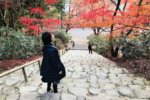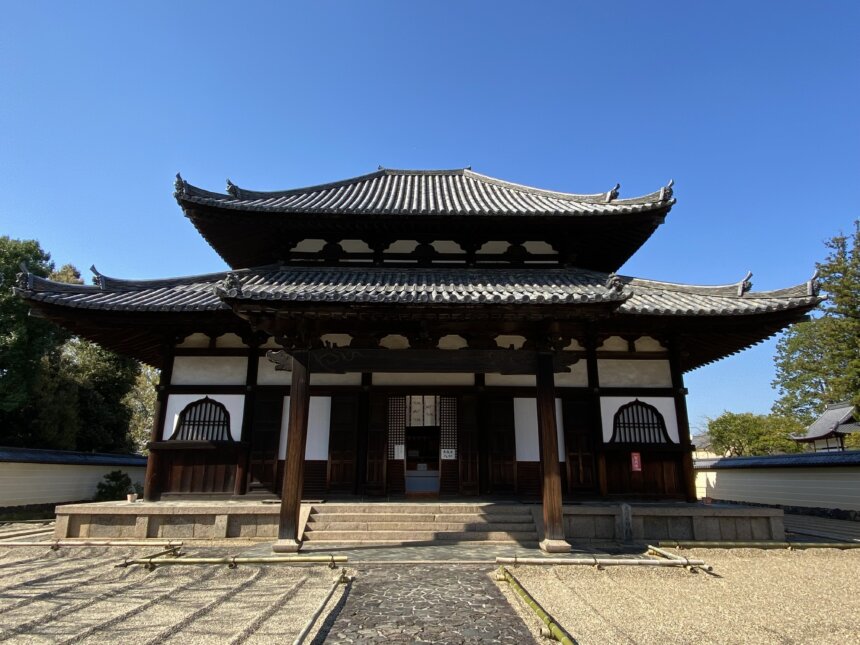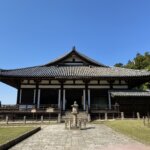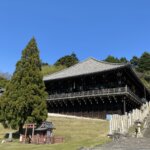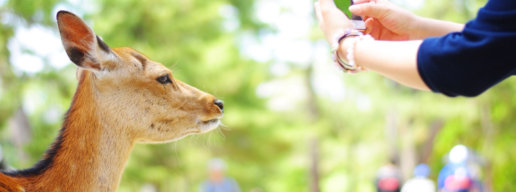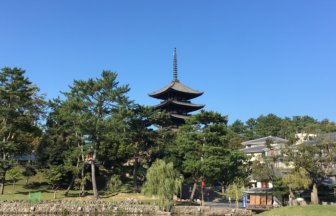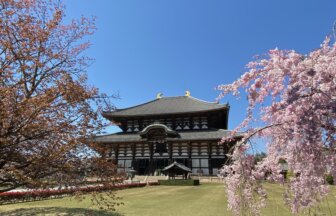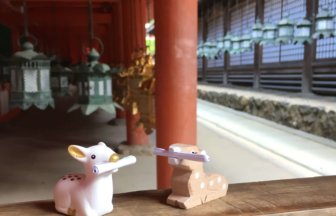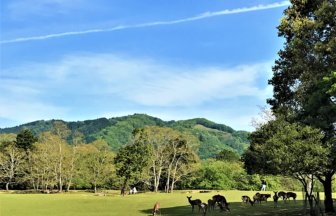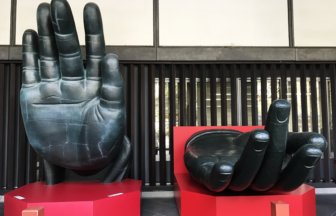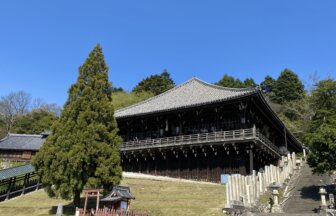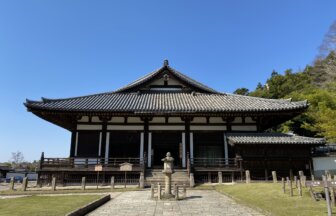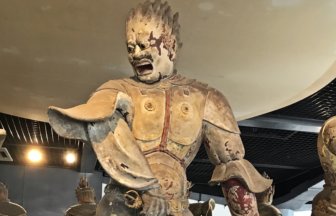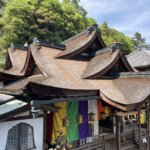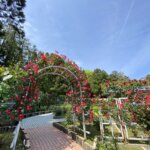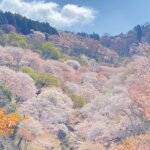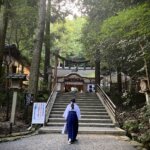Todai-ji Temple | Kaidan-do Hall |
For sure, the statue of Great Buddha (Daibutsu) is the must-see when you visit Todai-ji Temple. But there are still many you shouldn’t miss in the precincts of the Temple. One of them is a group of four warrior statues in the Kaidan-do Hall.
Walk for about five minutes from the Great Buddha Hall (Daibutsu-den) to the west and you will find steep stairs that lead you to a small building. It was originally built in 754 and named Kaidan-do (rebuilt in 1733).
Kaidan means a place for a Buddhist initiation ceremony to ordain trainees to the priesthood. They received commandments of Buddhism and swore to observe them in the Hall.
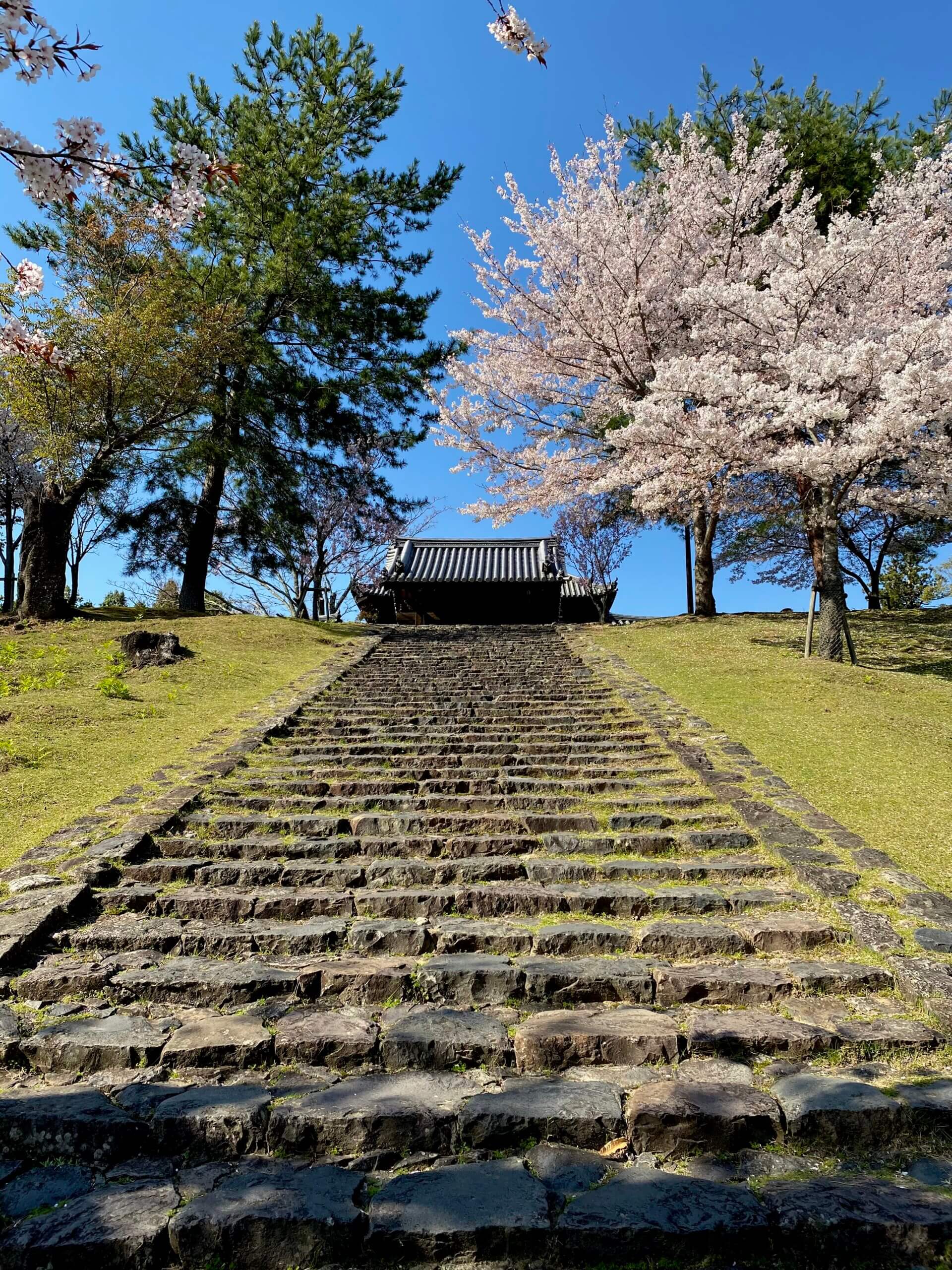
Stairs to the gate
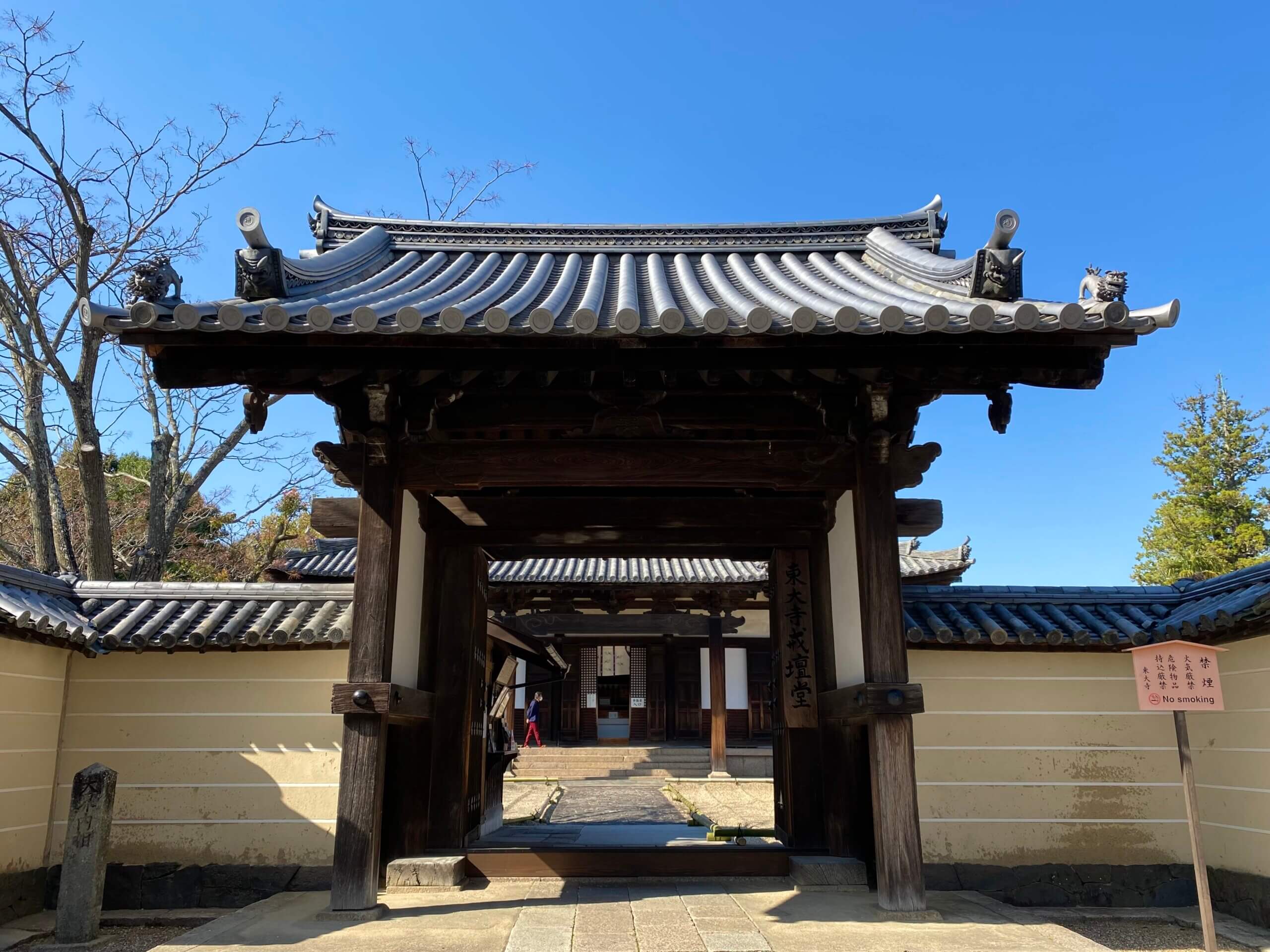
Gate
Four Warriors
In its dimly-lit room, Four Heavenly Kings stand at four corners of a square platform to guard the principal images of Buddha housed in a pagoda in the center. They are Jikoku-ten, Zocho-ten, Komoku-ten and Tamon-ten.
Jikoku-ten holds a sword. Zocho-ten has a polearm. The warrior with the writing brush and the scroll is Komoku-ten. Tamon-ten holds a small pagoda high.
If you have already visited the Great Buddha Hall (Daibutsu-den) or the other large halls, you may feel the statues are smaller and the room is too spacious for the number of statues it contains. Even so, I believe they are among the most beautiful and artistic statues in Japan. The simplicity and minimalism contribute to the sacredness of the Hall.
What is good about this Hall is a passageway situated around the platform on which they stand. You can walk around and see the statues from up close.
Look at each Heavenly King carefully. They are about the size of teenagers. They have narrow waists and well-built bodies. You must be impressed by their dynamic but balanced postures. The decoration of clothes and armor is breathtakingly delicate and beautiful. Some colors remain unfaded.
You will soon notice the furious look on their faces. They are browbeating people who have intention to break the Buddha’s teachings. Although the facial expressions of Jikoku-ten and Zocho-ten are a kind of exaggerated, the other two seem to show modest anger. What makes these statues different from the others is the reality and sophistication they have. It seems as if ancient people are standing there.
Truly, they are the finest masterpieces of clay statues created in the period when Nara was the capital of Japan (710 – 794).
Who Are Those Trampled on by Heavenly Kings?
This is one of the best places to observe Demon Spirits under the warriors’ feet, because you can take a close look at these little creatures.
Demon Spirits are trampled on by Four Heavenly Kings because they did evil. It is a punishment and must be painful. They show agony on their faces but the expression is humorous and somewhat funny. This is the reason why they are loved by many people.
Information:
Hours:
Apr.-Oct.: 7:30 to 17:30
Nov.-Mar.: 8:00 to 17:00
Admission:
Adult: 800 yen
Address:
406-1, Zoushi-cho, Nara City 630-8211 Japan
* You are always asked to check information on the official website before you visit.
https://www.todaiji.or.jp/en/
Access:
Route from the Great Buddha Hall (Daibutsu-den)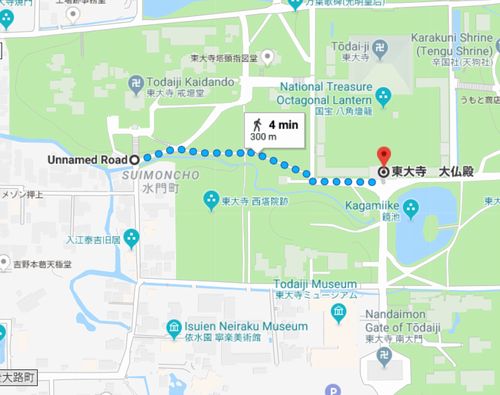
Last updated: May 14, 2024
Text by: Yumi 